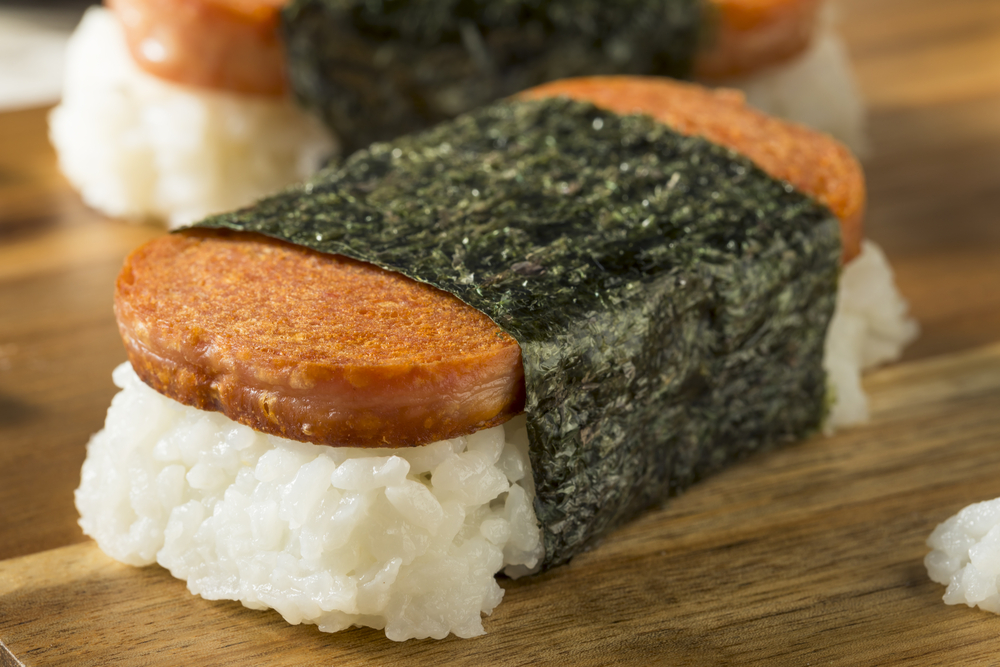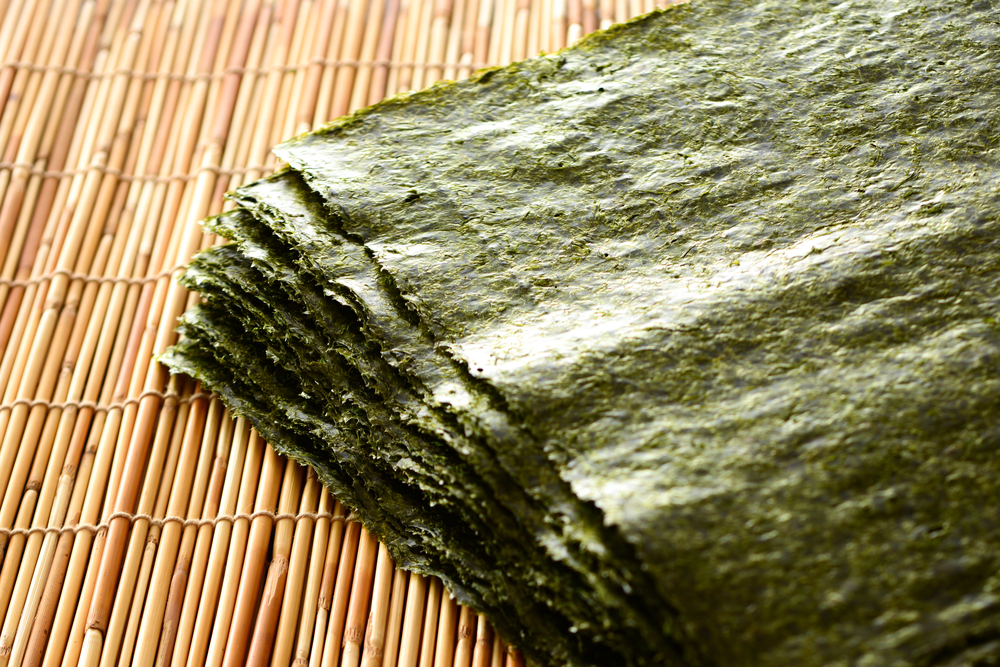Spam was introduced in Hawaii during World War II. The processed, canned meat was part of military rations for troops stationed on the islands. After the war ended, Spam had become a staple in Hawaiian cuisine. Spam musubi, which wraps fried spam and rice in a dried seaweed wrapper, was created in the mid-20th century. Resembling sushi, it was part of a wave of Japanese-Hawaiian fusion foods following a post-war increase in Hawaii's Japanese immigrant population. Today, Spam musubi is a popular snack and lunch food in Hawaii and can even be found at convenience stores. The dish can be eaten chilled or warm.
Recipe Servings: 4
Prep Time
5 minutes
Cook Time
25 minutes
Total Time
30 minutes
Vegetarian
Vegan
Gluten Free
Dairy Free
Kosher
Halal
Ingredients
- 2 cups short-grain white rice, uncooked
- 2 cups water
- 6 Tbsp rice vinegar
- ¼ cup soy sauce
- ¼ cup oyster sauce
- ½ cup white sugar
- 12 oz Spam
- 5 sheets sushi nori (dry seaweed)
- 2 Tbsp vegetable oil
Directions
- Soak the rice for 4 hours, then drain and rinse.
- In a saucepan, bring 2 cups of water to a boil.
- Add rice and stir.
- Reduce heat and simmer, covered, 20 minutes.
- Stir in rice vinegar and set the pan aside to cool.
- In a separate bowl, combine the soy sauce, oyster sauce, and sugar, stirring until the sugar is completely dissolved.
- Slice the Spam lengthwise and marinate the pieces in the sauce for 5 minutes.
- In a large skillet, heat oil over medium-high heat.
- Fry the slices for 4 minutes, turning once, until lightly browned on all sides.
- On a flat work surface, cut the nori sheets in half and lay out.Make a cake of rice, pressing by hand, about the same size as the strips of meat.
- Place a piece of spam on top of rice cake, then wrap the nori around all, sealing the edges with water.
Recipe introduction and directions © Copyright 2016-2025 World Trade Press. All rights reserved.


